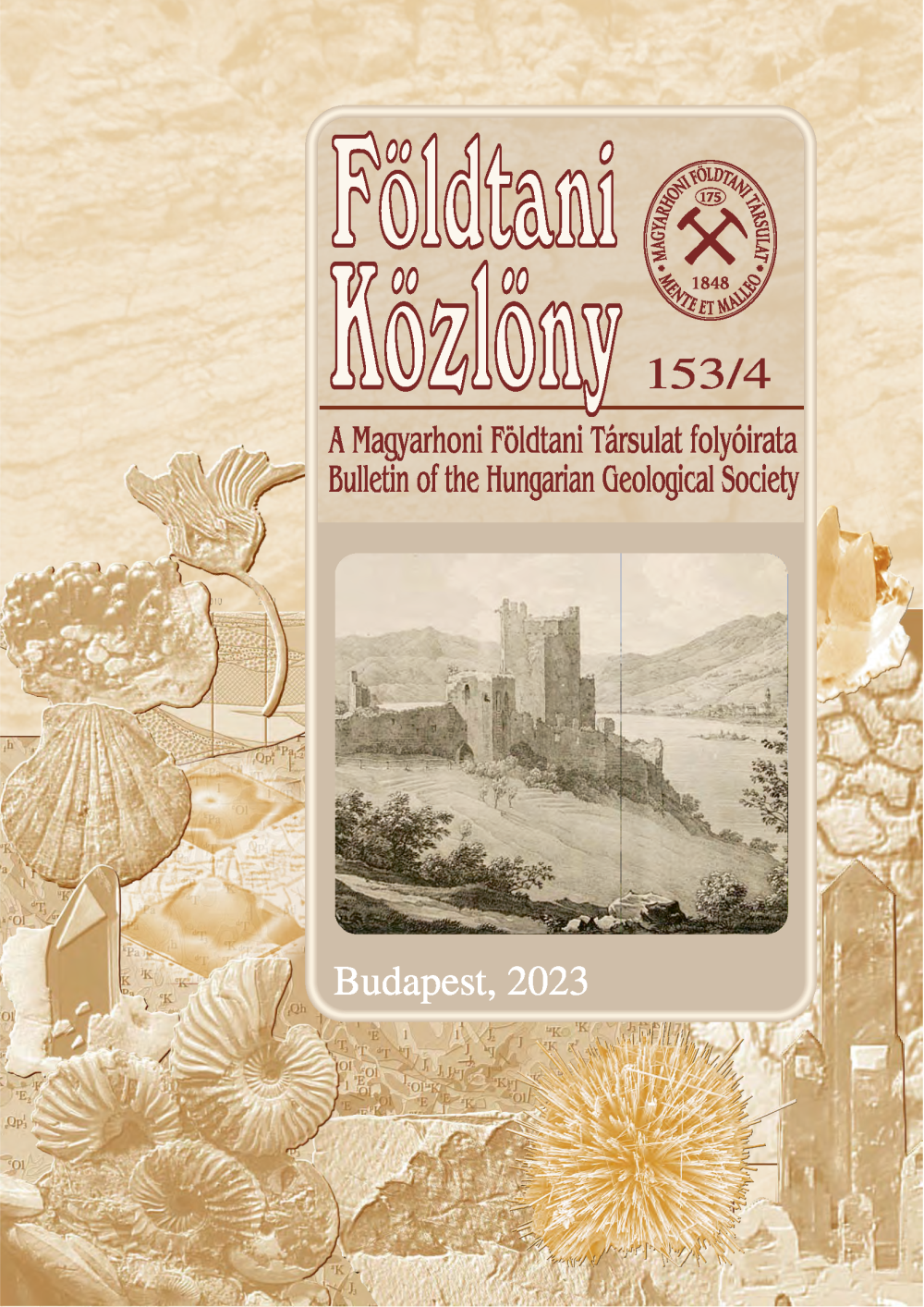The Miocene pyroclastic rocks of the boreholes Miskolc–7, Miskolc–8 and Nyékládháza–1 and their correlation with the ignimbrites of Bükkalja
Abstract
The nearly continuous drilling cores of the boreholes Miskolc–7, Miskolc–8 and Nyékládháza–1 provide a unique
opportunity to investigate the nature of the thick Miocene volcanic formations present in the boreholes. The large number
of volcanic layers implies there was repeated, intense volcanic activity from 19 Ma to 12 Ma. This work focuses on the
volcanological, petrologic, geochemical and geochronological characterization of the thickest volcanic units. Most of the
pyroclastic products were formed during the course of deposition from pumiceous pyroclastic flows under subaerial
conditions, and therefore they are ignimbrites. The 18–19 Ma-old non-welded to welded ignimbrite shows many features
similar to the pumiceous pyroclastic deposits which occurred over a wide area in the northern Pannonian Basin beneath
the Ottnangian–Karpathian coal-bearing sequence. The large thickness (>140 metres) in the studied boreholes indicates
an eruption of significant magnitude, possibly accompanied with the formation of a caldera or repeated explosive
eruptions in the proximity of the area of the boreholes. The borehole Nyékládháza–1 revealed a 250 metre-thick volcanic
suite above the coal-bearing sedimentary series. The data indicate a large temporal difference (ca. 3 Myr) between the
lower and upper portion of this sequence! The respective volcanological nature and composition of the phenocrysts of the
lower, 15–16 Ma-old ignimbrite are different from those characterize the ignimbrites of the middle volcanic suite of the
Bükkalja. Therefore, an eruption of compositionally different silicic magmas could have occurred almost contemporaneously in the northern Pannonian Basin during the Middle Miocene. In contrast, the 12–13 Ma-old ignimbrite found in
the upper part of this thick volcanic sequence can be unambiguously correlated with the Harsány ignimbrite unit from the
eastern part of the Bükkalja. The results obtained strongly suggest that the well-defined regional volcanic key-horizons
in the Pannonian Basin should be revised. In contrast earlier suppositions, the present study emphasizes repeated volcanic
eruptions throughout the Miocene and additionally, compositionally different magmas could have erupted frequently and
contemporaneously, even in spatially restricted areas.











